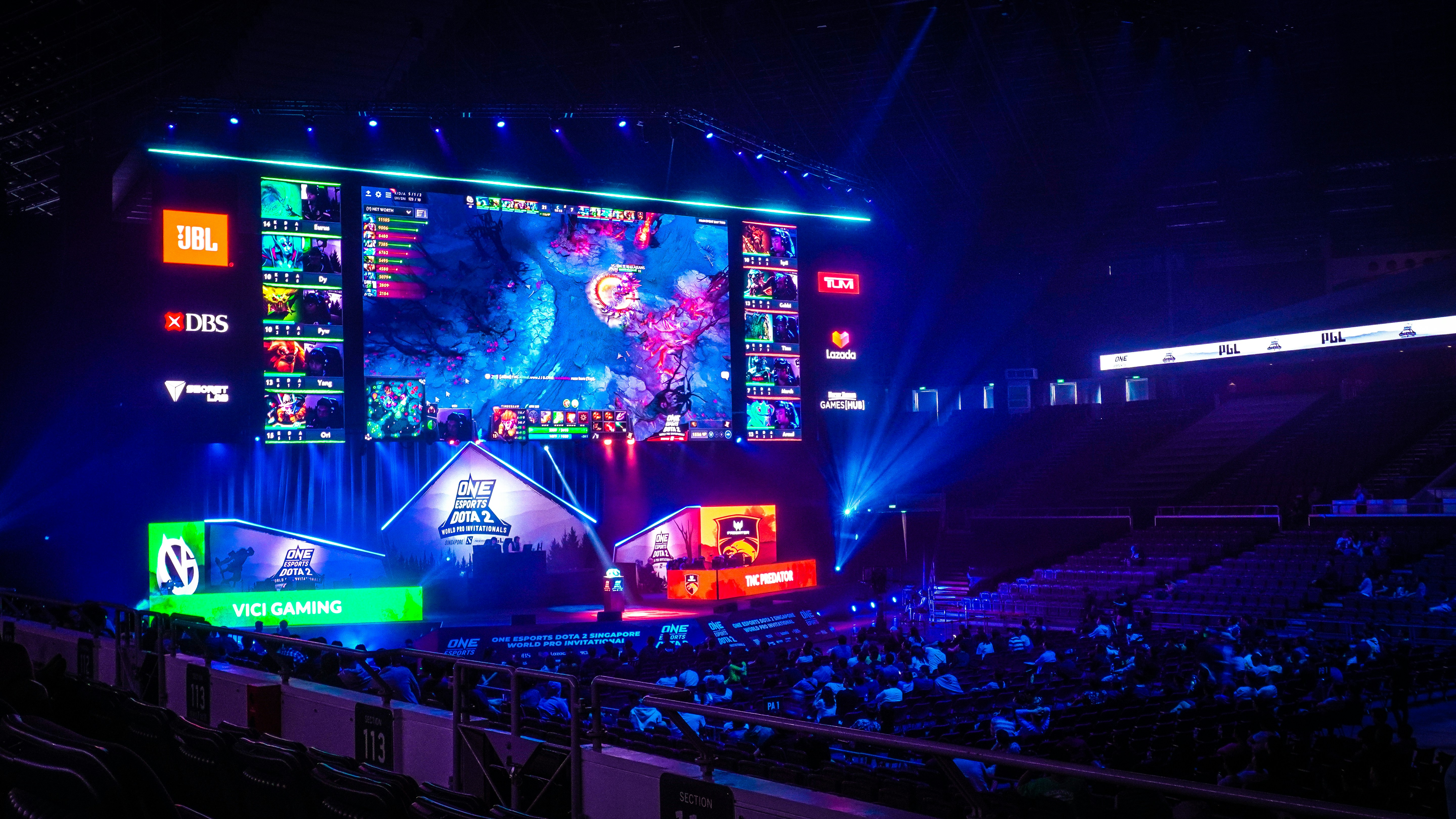Your cart is currently empty!

Blending Technology and Gaming Culture: A Journey Through Esports and Web Development
The Rise of Esports
The landscape of competitive gaming has undergone a remarkable transformation over the past two decades, evolving from a niche interest among hardcore gamers to a global phenomenon that generates billions in revenue. Esports, characterized by organized multiplayer video game competitions, has seen significant milestones that have solidified its status in the entertainment industry. The early 2000s marked the beginning of official esports tournaments, with events like the Cyberathlete Professional League paving the way for professional gaming. The introduction of popular titles such as StarCraft and Counter-Strike attracted dedicated players and enthusiastic audiences, setting the foundation for the esports arena we recognize today.
As technology advanced, so did the esports arena. The emergence of high-speed internet allowed for seamless gameplay and streaming, which further fueled its growth. Major titles like FIFA, eFootball, Valorant, PUBG, and Call of Duty have played a pivotal role in shaping the competitive gaming landscape. These games have not only created large player bases but have also sparked interest from spectators, leading to the proliferation of online streaming platforms like Twitch. Viewership numbers surged as fans began to flock to watch live tournaments, with millions tuning in for major events like The International for Dota 2 or the League of Legends World Championship.
The increase in sponsorship deals and investments from both corporate and individual stakeholders has also been paramount to the rise of esports. Companies recognize the vast and increasingly engaged audience, leading to partnerships with major esports organizations. The financial implications have set the stage for growth, with esports now being considered a viable career path for aspiring gamers. As the industry continues to evolve, the increasing integration of esports into mainstream entertainment, including partnerships with traditional sports leagues, suggests a promising future for competitive gaming on a global scale.
Web Development in the Gaming Sphere
In the rapidly evolving landscape of gaming culture, web development plays a pivotal role in shaping the online presence of esports and gaming communities. A dedicated website serves as a central hub for enthusiasts to gather, share, and engage with content that reflects their passion for competitive gaming. The importance of user experience cannot be overstated; a well-designed site should be intuitive, responsive, and visually appealing to keep players and fans returning.
Features such as live score updates, tournament brackets, and community forums significantly enhance user engagement. These elements foster an environment where gamers can connect, strategize, and celebrate achievements together, thus creating a sense of belonging within the gaming community. Moreover, integration of social media platforms and streaming services enriches user interaction, driving traffic and encouraging players to remain actively involved.
When it comes to the technical aspects of developing websites for the gaming sphere, knowledge of specific coding languages and tools is crucial. Popular technologies such as HTML, CSS, and JavaScript form the backbone of most gaming websites. Frameworks like React and Angular further streamline the development process, enabling the creation of dynamic interfaces that cater to the fast-paced nature of esports. Additionally, backend technologies like Node.js and databases such as MongoDB or MySQL are essential for handling real-time data such as player statistics and leaderboard updates.
However, developers face unique challenges in this niche. The need for scalability is paramount, as websites must handle fluctuating traffic during major gaming events. Performance optimization is also critical to ensure that users have smooth experiences when accessing live streams or participating in interactive features. Furthermore, maintaining a secure environment is essential for protecting sensitive user data, particularly in a world where cyber threats are ever-evolving. Ultimately, the intersection of web development and gaming culture is not only about building a website; it’s about creating a vibrant, immersive online ecosystem that resonates with the gaming community.
Passion for Competitive Gaming
The world of competitive gaming has transcended mere leisure, evolving into a vibrant culture that fosters community and connection among players and fans alike. Titles such as FIFA, eFootball, Valorant, PUBG, and Call of Duty stand out as significant contributors to this phenomenon. These games not only offer engaging gameplay but also serve as platforms for individuals to come together, share experiences, and celebrate their passion for competition. The thrill of esports ignites a fire within many players, driving them to improve their skills, engage with fellow gamers, and participate in global competitions.
The community aspect of esports is particularly noteworthy; it creates a sense of belonging that resonates deeply with fans and players. From casual pick-up matches to high-stakes tournaments, the relationships formed in these environments are often lifelong. Players find camaraderie in shared interests and goals, whether they are striving for personal excellence or cheering for their favorite teams. This connection extends beyond the screen, as many gamers actively participate in online forums, social media groups, and live events, reinforcing the sense of unity that characterizes the gaming culture.
In addition to fostering interpersonal connections, keeping abreast of gaming events holds tremendous significance within the esports community. Major competitions, updates, and patches can influence gameplay dynamics and strategies, making it imperative for enthusiasts to stay informed. Furthermore, as technology advances, the intertwining of gaming and tech continues to shape the industry, creating a rippling effect on both sectors. By following industry trends and innovations, gamers can better understand the underlying mechanics of the games they love, allowing them to elevate their own play and engage in informed discussions with peers.
The Future of Esports and Technology Integration
The landscape of esports is rapidly evolving, with technology playing a pivotal role in its transformation. As we look to the future, several emerging trends are set to redefine the way competitive gaming is experienced and interacted with by audiences. Innovations in web development are at the forefront of these changes, creating opportunities for enhanced user engagement and immersive experiences.
One significant advancement is the integration of artificial intelligence (AI) into gaming platforms. AI can analyze player behavior, provide personalized experiences, and offer real-time data analytics, enhancing both training and gameplay. This analytical capacity allows gamers to improve their skills while simultaneously offering viewers deeper insights into strategies and player performance, transforming the spectator experience into something more dynamic and informative.
Additionally, the adoption of virtual reality (VR) technology has the potential to create immersive environments where players and fans alike can engage in ways previously thought unimaginable. With VR, players can step directly into the gaming arena, interacting in a three-dimensional space that simulates real-life competition. This technology not only enriches gameplay but also allows spectators to feel as if they are part of the action, providing a unique viewing experience that could elevate esports events to unprecedented heights.
Furthermore, the synergy between esports and various forms of web development, such as responsive design and mobile optimization, cannot be overlooked. As mobile gaming continues to gain traction, ensuring that esports platforms are accessible on various devices will be crucial for expanding the audience base. Staying abreast of these technological advancements will be essential for organizations looking to remain competitive in both the gaming and tech sectors.
Ultimately, the trajectory of esports and technology integration suggests a future where continuous adaptation and innovation will be necessary to meet the demands of an ever-evolving entertainment landscape. Keeping pace with these trends not only ensures relevance in the gaming culture but also positions stakeholders to leverage new opportunities that technology presents.
About the event
Held over a weekend, the event is structured around a series of exhibitions, workshops, and panel discussions. The exhibitions showcase a curated selection of photographs that tell compelling stories from various corners of the globe, each image accompanied by detailed narratives that provide context and deeper insight into the historical significance of the scenes depicted. These photographs are drawn from the archives of renowned photographers, as well as emerging talents, ensuring a blend of both classical and contemporary perspectives.


New arrivals
Like flowers that bloom in unexpected places, every story unfolds with beauty and resilience, revealing hidden wonders.